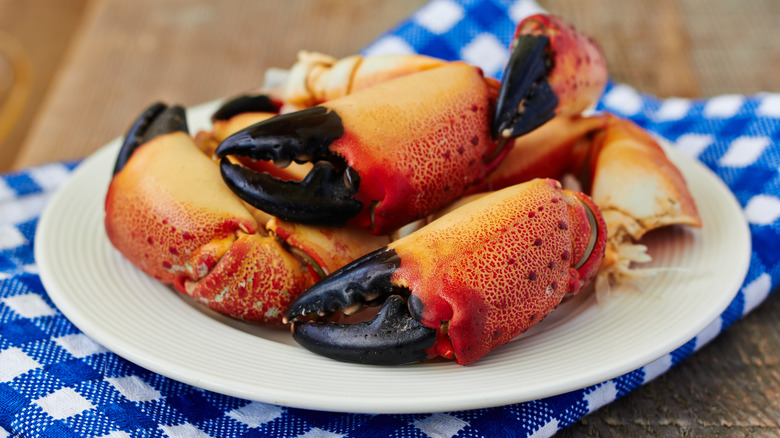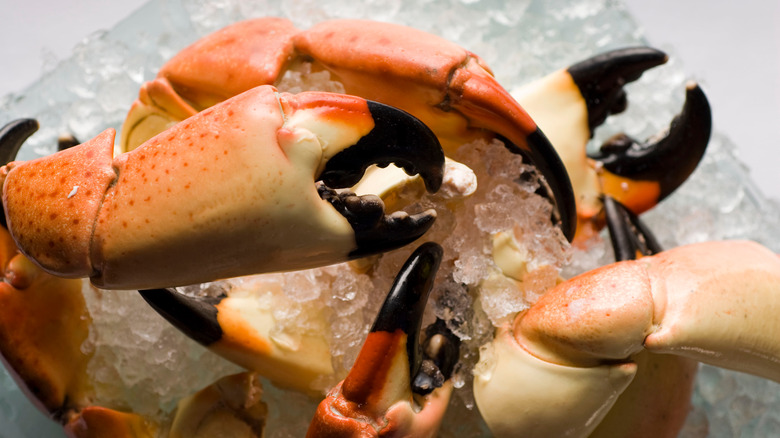Why Stone Crab Claws Probably Aren't Going Anywhere
Stone crabs are considered a seafood delicacy, with Edible Northeast Florida comparing the crab's mild, sweet flavor and texture to that of lobster.
Food Republic explains that stone crabs actually turn into soft shell crabs as they begin to molt, or shed their hard exterior. The majority of the stone crab catch comes from Florida waters, and they are a seasonal delicacy that are harvested from October to May, according to Fresh Stone Crabs.
Bon Appétit explains that fishermen use traps specific to stone crabs to catch them. Smaller than a lobster trap, and built as cubes rather than a rectangle, these plastic containers help keep the crab safe from sea turtles, octopus, and other larger fish who see them as dinner.
When the traps are hoisted up, the fishermen, taking care not to kill the crab, remove up to two claws, Bon Appétit reports. The fishermen only have about 30 seconds to remove the claws before the crab needs to go back in the water. Since claw regeneration is a natural process for these critters, removing one doesn't harm them or put them at a disadvantage to a predator. But it can take a year for the claw to grow back.
Since crabs spoil quickly, the meat is boiled directly on the dock and then flash-frozen before being shipped off to restaurants and fish markets (via Sun Sentinel).
Are stone crabs really sustainable?
While stone crab harvesting is celebrated as a sustainable fishing option, the Florida Fish and Wildlife Conservation Commission is starting to question this assessment. According to Florida Sea Grant, researchers found that 40% of crabs who lose one claw die. That percentage climbs to 60% for crabs that lose both. These percentages are compared to a 13% mortality rate of crabs whose claws remained intact after handling.
Business Insider cites researchers pointing to problems removing the crab's claw. If it's removed at a joint, the crab can essentially bleed out when they are returned to the water. Further, Business Insider reports that the stone crab catch is down 712,000 pounds since its peak in the 90s. Fishermen are dropping their traps further off shore, since the catch closer to land has dwindled. The Florida Wildlife Council believes this points to overfishing.
The dwindling catch, along with the amount of labor it takes to fish this delicacy — not to mention the strict limits on fishing, keeps driving the price of stone crab up, making it one of the most expensive seafood items on the menu.

